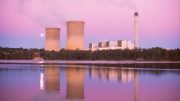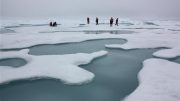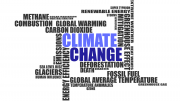Climate change, an inherently social issue, can upset anyone’s daily life in countless ways. But not all climate impacts are created equal, or distributed equally. From extreme weather to rising sea levels, the effects of climate change often have disproportionate effects on historically marginalized or underserved communities.
“Climate justice” is a term, and more than that a movement, that acknowledges climate change can have differing social, economic, public health, and other adverse impacts on underprivileged populations. Advocates for climate justice are striving to have these inequities addressed head-on through long-term mitigation and adaptation strategies.
The following are key factors to consider in thinking about climate justice:
1) Climate justice begins with recognizing key groups are differently affected by climate change.
From the United Nations and the IPCC to the NAACP, many organizations are connecting the dots between civil rights and climate change.
As a UN blog describes it: “The impacts of climate change will not be borne equally or fairly, between rich and poor, women and men, and older and younger generations.”
“Climate change is happening now and to all of us. No country or community is immune,” according to UN Secretary-General António Guterres. “And, as is always the case, the poor and vulnerable are the first to suffer and the worst hit.”
Generally, many victims of climate change also have disproportionately low responsibility for causing the emissions responsible for climate change in the first place – particularly youth or people of any age living in developing countries that produce fewer emissions per capita than is the case in the major polluting countries.
2) Climate impacts can exacerbate inequitable social conditions.
Low-income communities, people of color, indigenous people, people with disabilities, older or very young people, women – all can be more susceptible to risks posed by climate impacts like raging storms and floods, increasing wildfire, severe heat, poor air quality, access to food and water, and disappearing shorelines.
Here are a few examples of how some communities may be more affected by these impacts than others – and may have fewer resources to handle those impacts, too:
- Communities of color are often more at risk from air pollution, according to both the NAACP, the American Lung Association, and countless research papers.
- Seniors, people with disabilities, and people with chronic illnesses may have a harder time living through periods of severe heat, or being able to quickly and safely evacuate from major storms or fire.
- People with limited income may live in subsidized housing, which too often is located in a flood plain. Their housing options may also have inadequate insulation, mold problems, or air conditioning to effectively combat severe heat or cope with strong storms. Economically challenged people may also be hard-pressed to afford flood or fire insurance, rebuild homes, or pay for steep medical bills after catastrophe strikes.
- Language barriers can make it difficult for immigrant communities to get early information about incoming storms or weather disasters or wildfires, or to communicate effectively with first responders in the midst of an evacuation order.
- Some indigenous communities are already seeing their homes and livelihoods lost to rising sea levels or drought. For example, the Biloxi-Chitimacha-Choctaw tribe has lost nearly all of its land and is relocating to higher ground.
- Prolonged drought and flooding can affect food supply or distribution, making it harder for people to access affordable, healthy food.
- Today’s youth and future generations will experience more profound impacts of climate change as it worsens over time, from direct adverse health impacts to the financial implications of needing to shore-up infrastructure and other adaptation and mitigation needs.
3) Momentum is building for climate justice solutions.
Organizations like the Climate Justice Alliance are working to bring race, gender, and class considerations to the center of the climate action discussion. The NAACP is also advocating for efforts to reduce greenhouse gas emissions and advance clean energy while promoting food justice, transportation equity, and civil rights in emergency planning. And the UN and IPCC each continue to place greater emphasis on these issues.
In a June 29, 2020, Washington Post column headlined “Climate Change is also a racial justice problem,” reporter Sarah Kaplan wrote, “You can’t build a just and equitable society on a planet that’s been destabilized by human activities. Nor can you stop the world from warming without the experience and the expertise of those most affected by it.”
One indicator of the growing momentum of climate justice as a social issue is Democratic presidential hopeful Joe Biden’s campaign support for a “plan to secure environmental justice and equitable economic opportunity in a clean energy future…. Addressing environmental and climate justice is a core tenet.”
In the end, there is no single way to define, let alone champion, climate justice. But in combination with other current social justice movements – perhaps epitomized and including, but not limited to, the Black Lives Matter movement – many experts see climate justice becoming an increasingly significant component of overall concerns raised by climate change.





